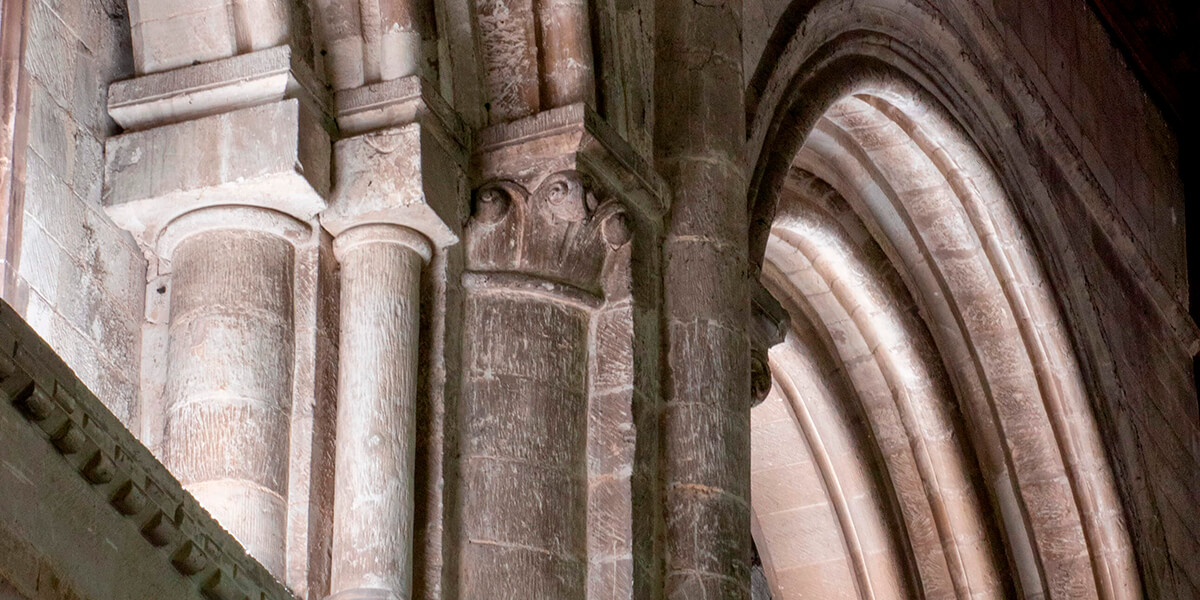From F A Fowler’s ‘The Priory Church of Saint Peter Dunstable – A Brief History’ with additions by Hugh Garrod, Church Historian
Although many interesting historical events have taken place in the Augustinian Priory of Dunstable and the subsequent Priory Church of St. Peter, its importance lies in the reason why it was built and the purpose for which it has been used and for which it continues to be used. It was built to the glory of God and has been used for His worship by countless generations.
THE PRIORY OF ST. PETER, DUNSTABLE, was founded by King Henry I to the glory of God. Henry had founded the town by at least 1109, and to safeguard its interests had built himself a house there called Kingsburie. Dunstable priory was, initially, a daughter house of Holy Trinity, an Augustinian priory in Aldgate, London. Our priory was founded by 1125. There is evidence of a school in Dunstable as early as 1110 or 1115. It would eventually become part of the Priory. The establishment of a priory of Augustinian, black, canons opposite his house completed the king’s plans for the well-being of the town. Henry endowed the Priory with the quarry at Totternhoe and the lordship of the town with all the privileges he had himself enjoyed when he held it in his own hands. The prior was thus the lord of the manor and responsible for collecting the taxes. These privileges were to be the cause of much trouble in later years and resulted in bitter quarrels between townsfolk and Prior, although most of the money went to the Exchequer to pay for the wars in France and Wales. Religious houses also had obligations to make regular and occasional payments to the pope in Rome.
(Image – The Norman Pillars 1150 – 1200)
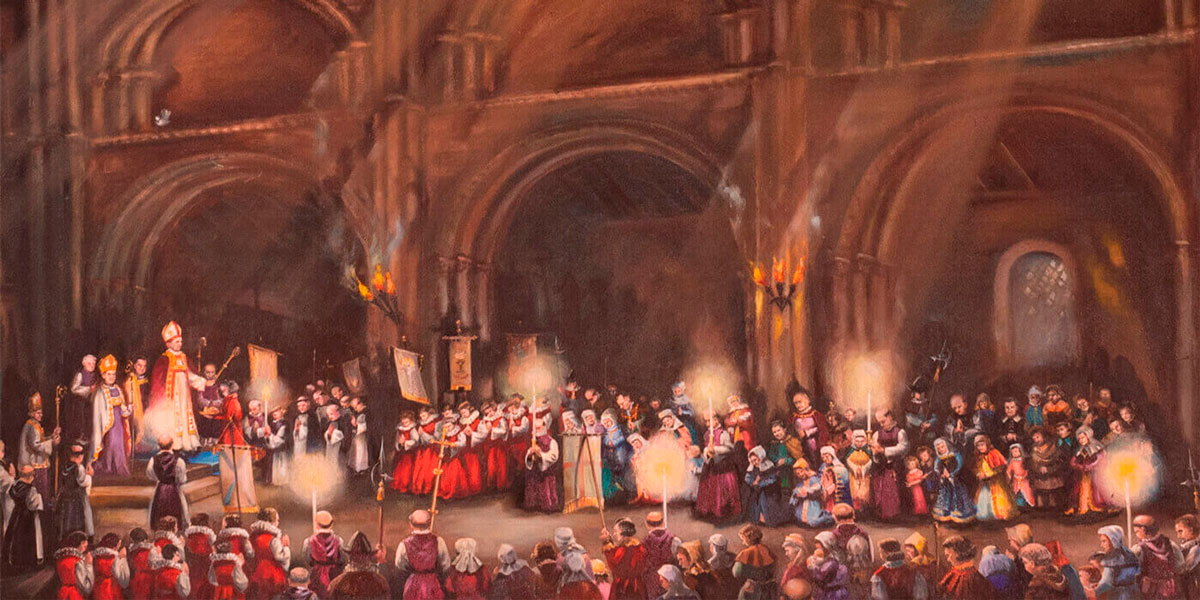
Plan of original Dunstable
The church was built in the form of a cross with a great tower at the crossing and with two smaller towers at the west end. Progress was slow and it was some seventy or eighty years before the church was complete. Work was impossible in the depths of winter, so progress was sporadic. The first prior of Dunstable, Bernard, was, with his brother Norman (afterwards prior of St. Botolph, Colchester), closely associated with the introduction of the Augustinian Order into England. The church and monastic buildings were erected under his rule and that of his two immediate successors, Prior Cuthbert and Prior Thomas. About this time, Alexander Nequam became master of the school. He was a great scholar and eventually became abbot of Cirencester. On October 18th 1213, Bishop Hugh II of Lincoln came to Dunstable and held a service of Dedication. Lincoln was a huge diocese, stretching from the Humber almost to the Thames.
The fourth Prior, Richard de Morins, elected 1202, was a man of considerable influence and ability. He was head-hunted from Merton Priory by King John. Richard ruled the Priory for forty years and under him it entered upon the most prosperous period of its history. He was commissioned by the Pope to preach the Crusade in 1212 and he attended the Lateran Council in 1215. It was he who commenced the Annales de Dunstaplia which is not only the history of the Priory, but a most absorbing chronicle of the doings of Prior and townsfolk, local gossip and lawsuits, and of events in England and in Europe as seen from the standpoint of Dunstable cloister. The Priory attracted many pilgrims as they made thier way to the shrine of Alban, to the south. King John gave permission for de Morins to move the bones of St. Fremund from Cropredy in Oxfordshire to Dunstable. This vastly increased the number of pilgrims who came through the town, all of whom needed to be accommodated and fed. In 1207 altars were dedicated to St. Mary the Virgin, St Fremund, St Nicholas and St. Jasmes. The Priory was given farms, churches and granges as far away as the Peak District. The income from the huge flocks of sheep supported the Priory in its work with the pilgrims and with the poor. The Prior journeyed around, inspecting his lands, several times a year. In good seasons the farms brought the Priory much wealth. In times of famine, they were a drain on the Priory’s resources.
The Annals of the Priory also inform us that in 1220 the altar of the Holy Cross and All Angels before the Rood Screen and the altar of the parish in honour of St. John Baptist were consecrated.
(Image – Dedication of the Church by Hugh, Bishop of Lincoln in 1203 circa 1700)
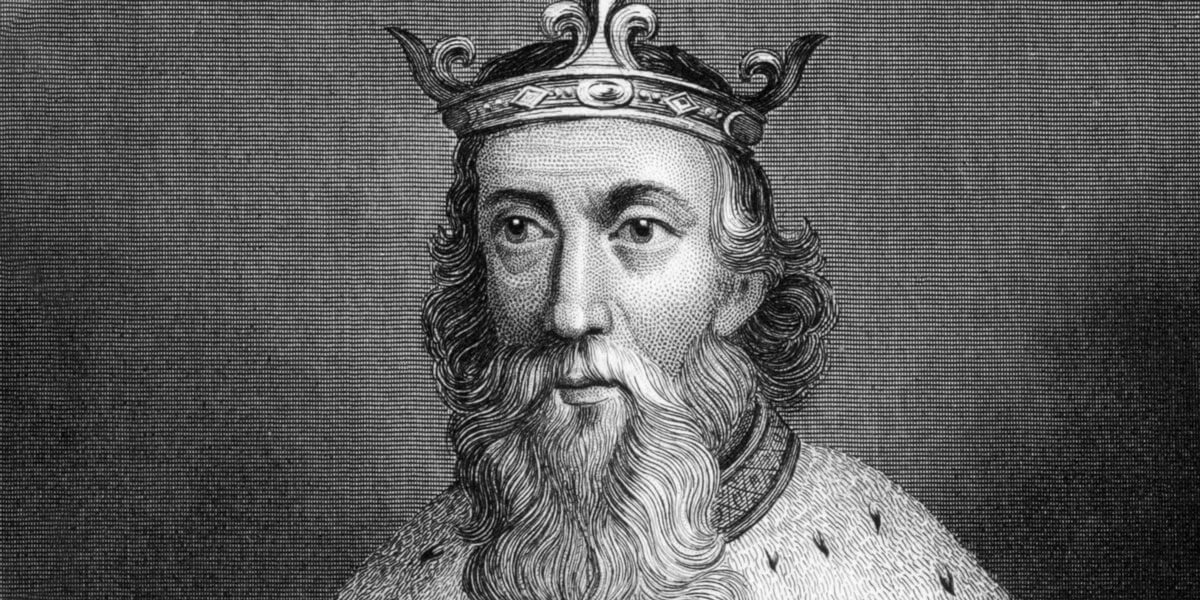
A “Stormy” Decade (The 1220s)
The beautiful Norman church was not destined to remain complete for long. In June, 1222, the roof of the presbytery fell, and a far greater disaster befell it in December of the same year when a violent storm which swept across the land brought down the two western towers. The fall of the northern tower ruined the west front; the southern one brought down the prior’s house. The front was immediately rebuilt without towers. Its upper portion was designed with beautiful arcading and niches for statuary; the whole conception forming a lovely screen front with heavily buttressed turrets at the angles.
Ebb and Flow of Prosperity: The Priory during the High Middle Ages (13th through 15th centuries)
In 1227 we hear of a chapel being founded in the canons’ churchyard dedicated to St. Martin and in 1228 mention is made of an existing Infirmary Chapel. In the same year the chapel of Our Lady was built at the extreme eastern end of the church in the cemetery of the canons. Its altar was dedicated in 1231 . In 1250 the canons built the inner gate within the court and placed ten tons of lead on the refectory roof. In 1251 the dormitory had to be rebuilt. In 1252 new workshops were built in the court for the carpenter and wheelwright, and in the same year the great stable was built. Within four years it fell and had to he rebuilt in 1258. In 1273 we learn that the vault of the north aisle became ruinous and that the parishioners restored it, a certain Henry Chadde bearing the chief expense. Master Michael made two large bells in 1277 and after his death, three more were made by his son. In 1282 the canons built a new body to the bakehouse and rebuilt the brewhouse wall. They placed a clock over the pulpiturn in 1283. It had no hands but struck the times of the daily offices (services). In 1289 they completed two pinnacles on the front of the church, and the parishioners restored the north porch and re-vaulted it, half the expense being borne by John Durant, senior.
Impression and plan of the whole monastic complex
During the 13th and 14th centuries Dunstable was the scene of many Tournaments. Edward I (image) attended those of 1279 and 1280 and Edward II in 1308. Edward III was here for the great tournaments of 1329 and 1341 with many of the nobility and as a result the hospitality of the canons was strained to breaking point.
(Image – King Edward I)
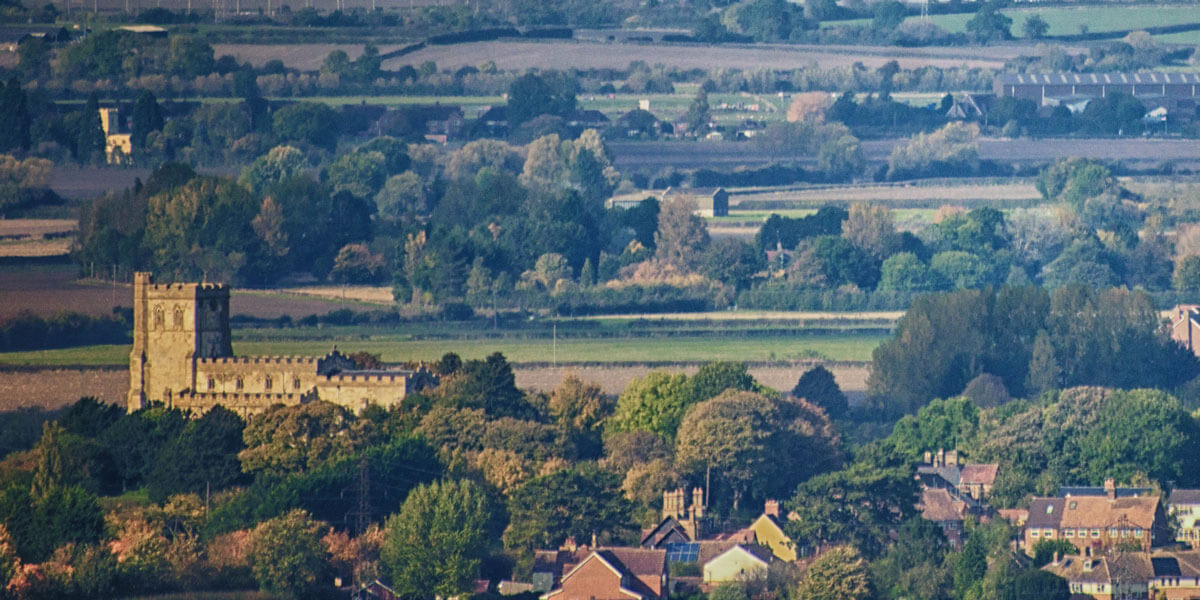
The Canons of Dunstable
If the canons were not “of the world,” they were certainly in it, and standing as the Priory did on one of the main roads to the capital, little of importance passed their notice. Although the Priory under de Morins gained importance and prosperity, his rule was not without troubles and disturbances, for although on the whole the canons lived amicably with the townsfolk, the unusual rights of the Prior were resented by the burgesses. He had the power to try offenders and to punish them. Assizes were held in the town and when the king’s justices came, he sat with them as their equal. In 1228 there were riots over the payment of taxes. Outrages were committed and slanders levied at the canons, and the bishop came and solemnly excommunicated ten of the chief burgesses. They declared they would rather go to hell than pay the tax and they went so far as to ask the lord of Eaton Bray to give them forty acres of land where they might build another town and leave Dunstable for ever. They “simmered down” at length and peace was restored. De Morins died in 1242 and with his death the prosperity of the Priory came to an end. He was succeeded by Geoffrey of Barton whose 20 years as prior were beset by many problems.
(Image – Eaton Bray)
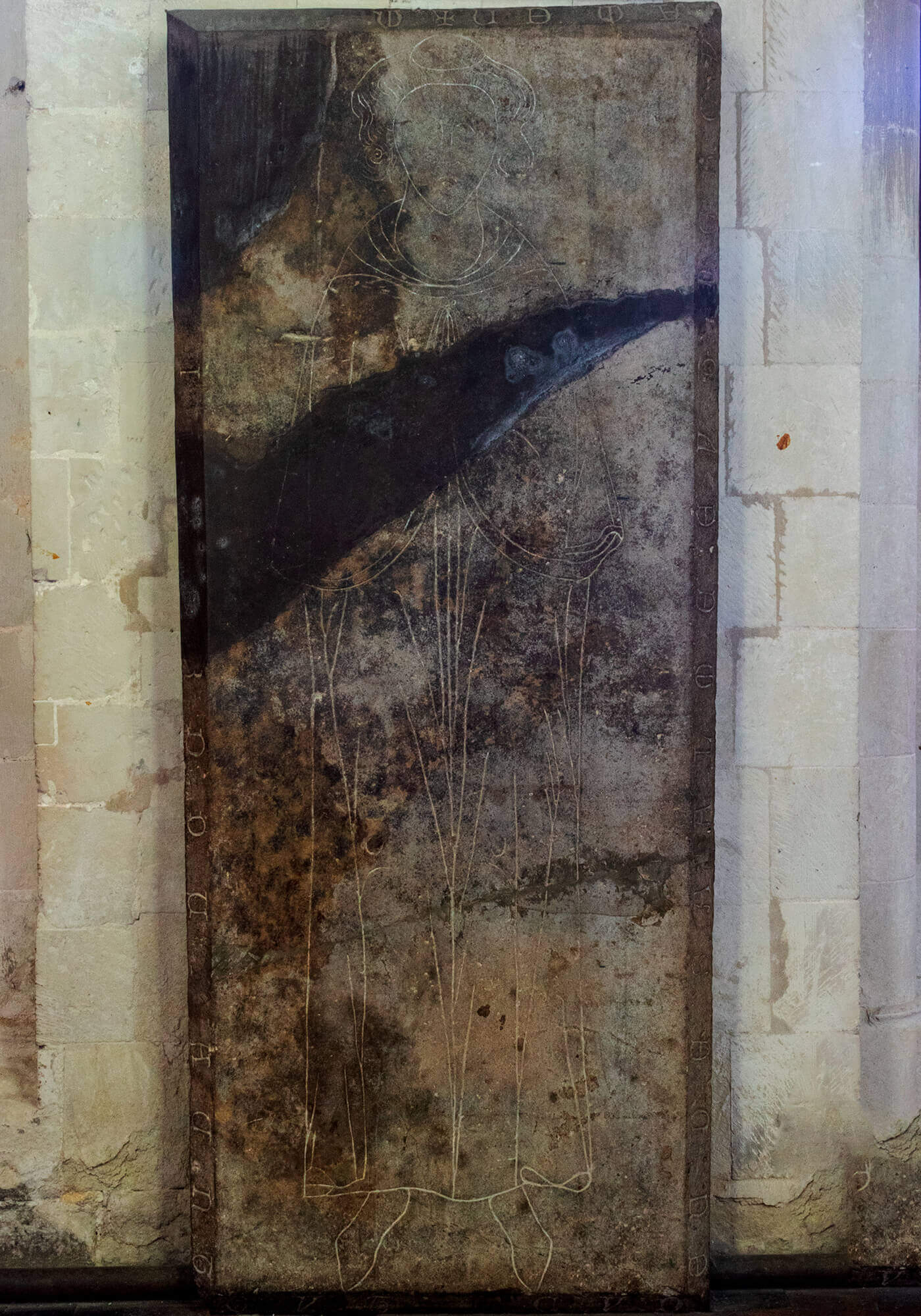
The Life of the Priory
The canons of Dunstable were clergy. They ministered in the neighbourhood and at Bradbourne in the Peak district where they owned the living and where three canons served the parish church and its four outlying chapels. Troubles befell in 1243 when large numbers of the Prior’s sheep died in a severe winter. Then a succession of bad seasons and failure of crops led to great scarcity and the Priory began to get into debt. The poor canons tried every known means to solve the problem. They cut down their rations, reduced their staff, priors resigned or were deposed. But do what they would, they could never make both ends meet. This was not surprising, for situated as it was on the main road from London to the midlands, the Priory was a house of call for all comers–a sort of free hotel where all travellers could request hospitality and by the Rule might never be refused. When some royal visitor or magnificent noble with his suite passed and chanced to stop. it could but add disaster to the Priory’s finances. To make matters worse, they were always having trouble with the buildings now.
Then just when the Priory was in direst poverty–in 1259–the Dominican or Black Friars settled in the town. The canons were sorely upset. Resist them they did, but to no avail, since the friars came with the permission of the archbishop and King Henry III and they were forced to see these intruders obtaining the patronage of the mighty and the alms of their parishioners, who were attracted by the novelty of the Friars’ preaching.
(Image – Durant Grave Slab circa late 13th Century)
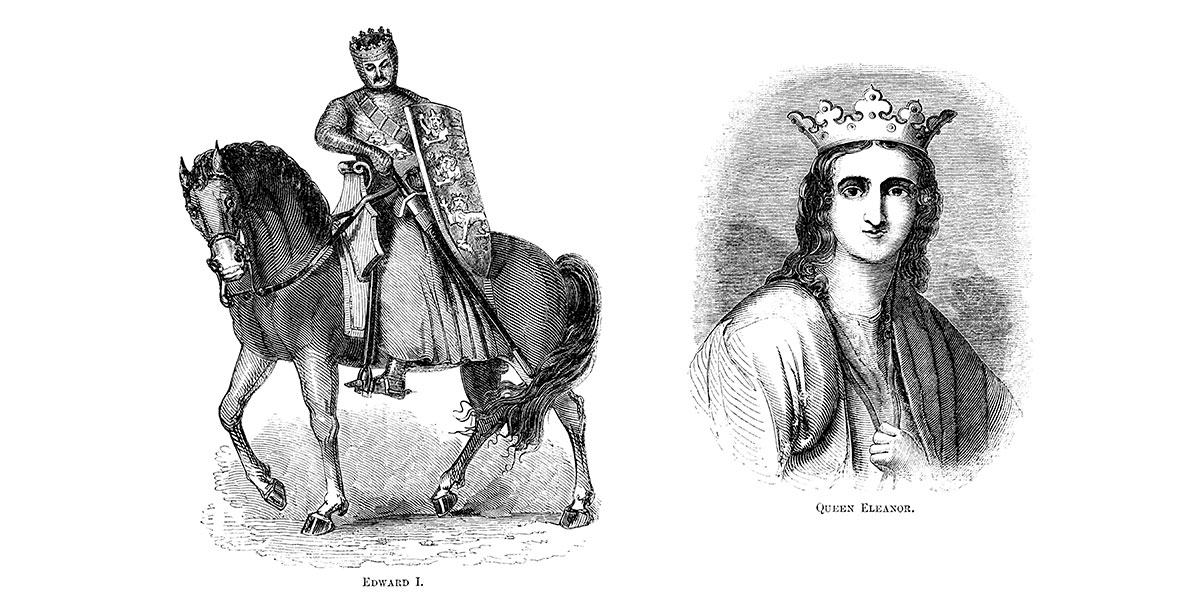
Queen Eleanor Cross
During the rule of William de Wederow (1280-1302), in the failing light of a December afternoon, in 1290, came Edward I following on foot the body of his beloved Queen to burial at Westminster (image). The canons came out in procession to meet the cortege at the Market Place and escorted the bier to the church where the body of the queen rested all night before the high altar, and next day after a solemn requiem, the cortege proceeded slowly towards St. Albans. On the spot near the cross roads where Eleanor’s body had rested. was erected to her memory one of’ those beautiful crosses, of which three still remain. The Dunstable cross, said to have been similar to that at Geddington, was destroyed by the soldiers of Fairfax during the Civil War.
That very extensive alterations were made to the monastic church is certain. Commencing at the east end with the rebuilding of the Lady Chapel in 1324, they continued for well over a hundred years, during which time it is probable that most of the Norman work of the quire, transepts and central tower was overlaid or replaced by “Decorated” Gothic. Of all this, nothing now remains except a pier of the second half of the 14th century attached to the east wall of the present church. When the rebuildings were completed, the canons’ stalls, which formerly stood beneath the central tower, were removed into the eastern arm of the church and the old pulpiturn converted into a rood screen. The blocking of the central door may still be observed outside the present east end immediately behind the altar.
(Image – King Edward I and Queen Eleanor)
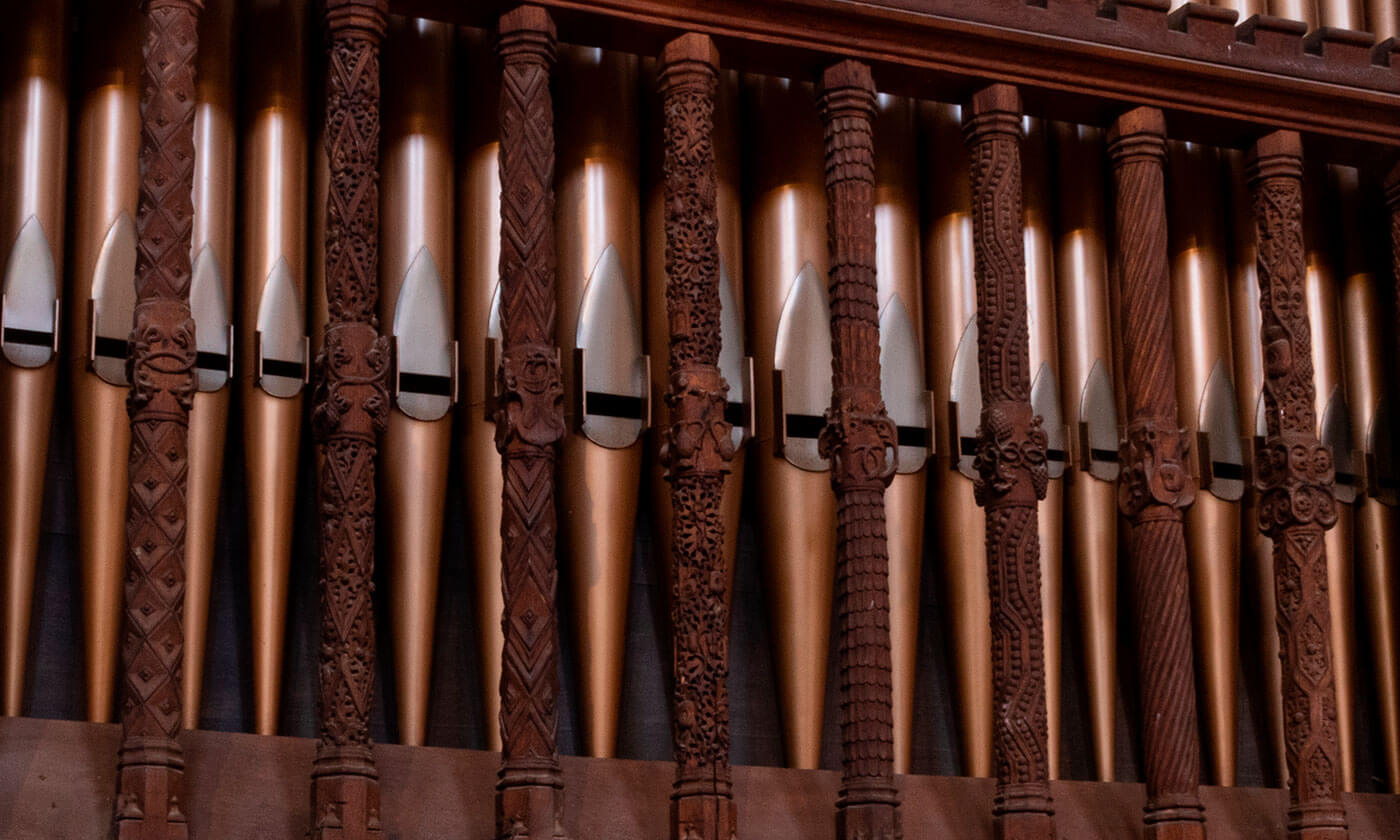
Impression of the church left by Prior Marshall
In 1442 certain merchants and burgesses of Dunstable founded a Fraternity dedicated to St. John the Baptist. When the upper storey of the nave became ruinous, they removed it altogether and inserted windows in the triforium, converting it into a clerestory. They gave the roof a flatter pitch, similar to that now existing. They finally built a tower over the western bay of the north aisle to hold their bells. The fourteen roof figures in the Priory church are images of Fraternity members. The Fraternity maintained a Brotherhood House which contained chambers and beds for poor folk travelling through Dunstable and four other tenements under the same roof were reserved for the succour of four poor brethren of the Fraternity who were to pay no rent for them. They also maintained a priest to celebrate Mass at the altar of St. John in the Priory Church, with which services is associated the celebrated Fayrey Pall. Members of the Fraternity are commemorated in the brassesand roof figures.
John Roxton was succeeded in 1473 by Thomas Gylys. He resigned in 1482. The next prior was Richard Charnock, who was well known by Erasmus and John Colet. Richard Charnock resigned in 1500 and was succeeded by John Wastell, who died in 1500.
Twelve Days that Shook the English World (May 1533)
The last Prior of Dunstable was Gervase Markham. He was elected in 1525. Within ten years dark clouds threatened the monastic horizon. Men’s thoughts and outlook were changing and a new spirit was abroad. The middle ages were passing and the end of the monasteries near.
It was just before the end, in 1533, that archbishop Cranmer came to Dunstable with the bishops of Winchester, London, Bath and Lincoln to judge his royal master’s “grete and weightie cause” and annulled his marriage to Queen Catherine of Aragon. It was the final act in the shameful proceedings, Dunstable being chosen as Catherine was then residing at Ampthill. The court was opened in the Lady Chapel of the Priory Church on the 10th of May, Prior Markham taking part in the proceedings. Catherine was cited but failed to appear. On May 23rd, 1533, Cranmer declared the annulment of the king’s marriage. He was now free to marry Anne Boleyn. This was the beginning of the break with Rome; the pope’s authority had been publicly flouted.
(Image The Marian Pillars 1553-1558)
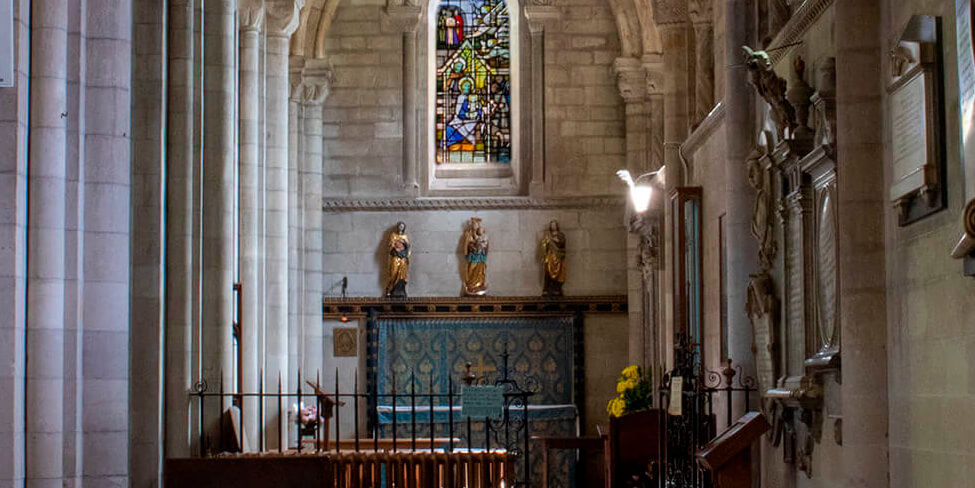
Dissolution and Aftermath
(1536-1540)
The Dissolution of the religious houses is a sad, sad tale, too long to dwell on here. Henry VIII initiated the Valor Ecclesiasticus, a survey of the income of each religoius house. The smaller monasteries were dissolved by Act of Parliament in 1536. Pressure was then brought to bear upon the larger houses and the process went on, until by the Spring of 1540, not one of the English monasteries remained. Dunstable Priory was never a wealthy house. There is no accusation of laxity or stain on its character. Its income was not great, the revenues being estimated at but £334 13s. 4d. clear yearly. The deed of surrender was signed on the 31st December, 1539, and the monastery dissolved in January 1540, the prior and the twelve canons all being granted pensions. Dispensations were granted them to serve as secular priests.
The great church and the buildings of the monastery were kept standing intact for some few years, since in the scheme for the creation of new bishoprics it was intended to create a see at Dunstable with the Priory Church as its cathedral. The impressive list of dignitaries prepared by Gardiner is on record and the bishop was actually named, but the scheme fell through and the beautiful church (with the exception of the parochial nave) shared the fate of the monastic buildings, being plundered of all that was valuable and left a ruin to become a quarry for the whole neighbourhood.
After the scheme for a bishopric had fallen through, a wall was built up from the rood screen and the nave and its aisles sealed off for the use of the parish. During Edward VIth’s reign the reformers despoiled the church yet further, but some semblance of seemliness was restored to it in Mary’s reign, as the remains of screenwork of that period testifies.
(Image The Lady Chapel – South Aisle)
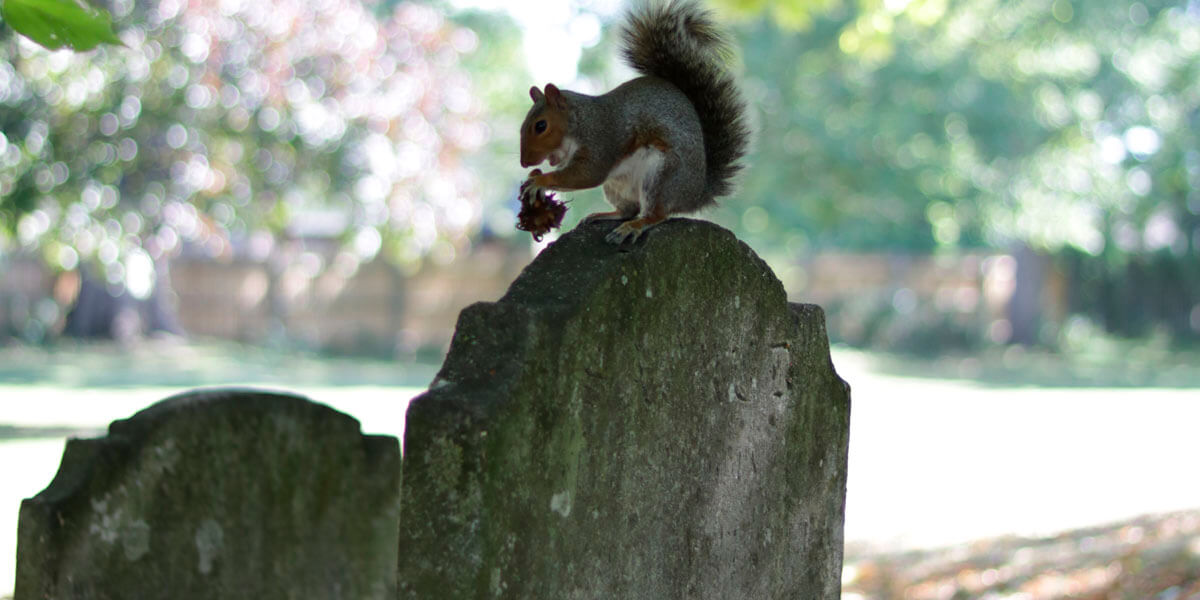
As for the Old Canons…
When they left their old home for ever, the canons would go to their relatives or friends until they could get appointments. Gervase Markham doubtless rode off to stay with his brother William at Husborne Crawley for a time, but he was living in Dunstable a few years later, his brother having removed to Hanbury in Staffordshire, where the sub-prior lived with him as his chaplain. Several of the canons were instituted to local livings as vacancies occurred, others obtained livings farther afield. Two of them broke their vows and married, and were deprived of their livings when the old order came back under Mary. One however, forsook his spouse and promptly got another living.
Prior Markham lived on through the changes of Edward VIth’s reign, and the reversions of that of Mary, until the dawn of the reign of Elizabeth, dying at Dunstable in 1561. He accepted no appointment and lived quietly in the town on his considerable pension. He had a housekeeper, a manservant and a maidservant. At his death he still possessed his chalice, vestments and “ornaments and implements for a chapel” and in his will he leaves them to his cousin to keep in case “they may at any time hereafter be occupied in the church again.” He was buried in the church on September 23rd, as the entry in the parish register records.
The turmoil of events during this period produced mixed progress in the reform of daily church life. By Elizabeth’s reign those wishing to be confirmed were required to know by heart (in English) the Lord’s Prayer, the Creed and the Ten Commandments. To assist in this, painted boards were fixed to the east end wall. The puritan zeal of the Commonwealth period caused much upheaval in the forms of worship. Some semblance of order was restored with the restoration of the Monarchy. This eventually led to the pulpit-orientated layout of the Church. A high three-decker pulpit fixed to the pillar west of the present pulpit overlooked a mass of box pews and was on a level with those erected in galleries between the south aisle pillars. At this time the Eucharist was only celebrated at festivals; the importance of the altar was secondary to that of the pulpit.
In the year 1600, John Willis, curate of Dunstable, began a vellum book and copied into it entries from an earlier book beginning from the year 1558. These early entries are in Latin. To preface the Register he wrote and illuminated three folios. The Register Title Page contains some elaborate scroll work together with some curious emblems. The second folio has the arms of the town and priory amidst much scroll work and quaint creatures; whilst a third folio has verses in two columns below a large and elaborate letter ‘B’. These verses, most likely his own composition. give the legend concerning the foundation of the town and priory by Henry I and the origin of its arms.
The earliest register contains baptisms, marriages and burials from 1558 until 1748. The entries in the first half of the 17th century often record the birth of the child and not its baptism as many of the parishioners at that time were infected with Anabaptist doctrines and refused to have their children baptised.
(Image – Priory Cemetery)
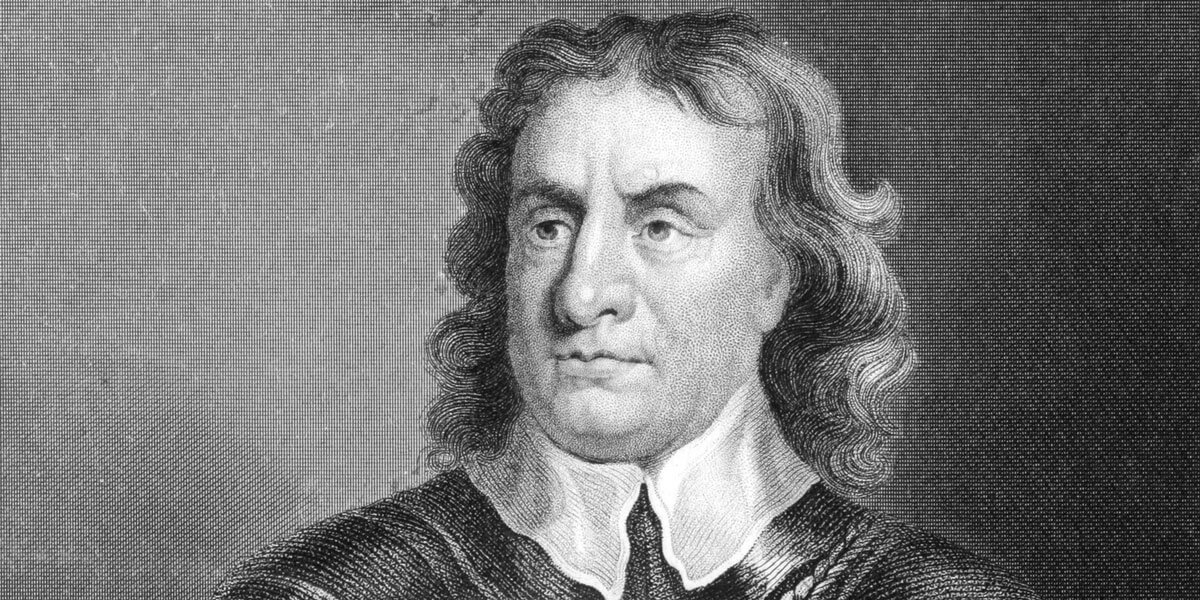
The Hundred Years of Living Dangerously
Reformation and Extremism in South Bedfordshire
(1550-1650)
The religious upheavals of this time left their mark on parochial life, as is apparent when the churchwardens of Dunstable at the visitation of Cardinal Pole in 1556 complained that the town was populous, but neither rector nor perpetual curate was found there, and “he that was hired could not preach”.
By the end of Elizabeth I’s reign Puritanism had become extremely active in South Bedfordshire. All was not well at Dunstable. John Richardson, the rector, was “presented” in 1603 for puritanical practices and for refusing to wear the surplice, but afterwards conformed. Edward Alport, the next rector, encountered great opposition from the Puritan element and from the Anabaptists. They obstructed his ministry and tried by every means to oust him from the living. They planned to set up a Presbyterian organisation and prevented the vicar of Totternhoe and other licenced clergy from doing duty in the absence of the rector. Then they complained to the bishop of Lincoln that no services had been held in the church on those Sundays. Edward Alport went in 1625.
Zachary Symmes next appears. He was an extremist, and for his puritanical practices aroused the hostility of the bishop. He eventually concluded that religious freedom could only be found in New England. He resigned the living in 1634, and with the rector of Odell, set sail for Massachussets the following year and bade farewell to Dunstable for ever.
William Pedder, appointed rector in 1634, was of moderate churchmanship and a royalist. He found the parish in a divided state and encountered much opposition. He was turned out of the living in 1642 and in his place Parliament appointed a group of eighteen “lecturers,” who preached in the church on Sundays and weekdays. However, this arrangement did not fulfil the expectations of the parishioners, many of whom wanted a minister of their own. Less than two years after this scheme was instituted, the town was raided by a party of Royalist soldiers from Leighton Buzzard, who on a Sunday in June, 1644, made an attack on the church during service time. The congregation had barricaded themselves in, and the soldiers forced the doors, shooting a “case of pistols” at the minister in the pulpit and wounding several of the congregation. The incident further embittered the factions.
Ten years afterwards, when feelings had calmed down, a group of parishioners petitioned Oliver Cromwell to give them a minister. So, in 1656, Cromwell’s “Triers” selected them a minister and Isaac Bringhurst became rector. He, of course, had to promise not to use the Book of Common Prayer. It is uncertain whether or not he was episcopally ordained, but he was a good man and did his best to repair the damage done during the fourteen years the parish had been without a rector. There was no more complaining and no more unreasonable opposition, and church life progressed along more normal lines.
(Image – Oliver Cromwell)
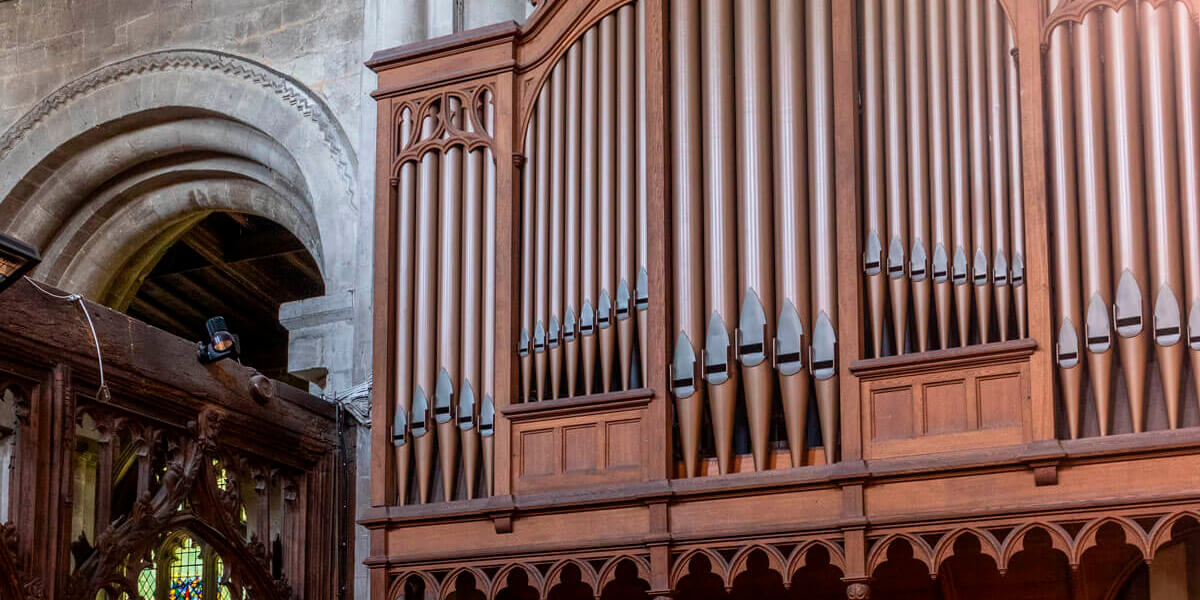
The Twentieth Century
Stability regained
Under a further restoration carried out by Mr. G. F. Bodley in 1890-91, the chancel screen was restored to its original position and a painted and gilded Rood relieved the great expanse of wall formerly occupied by Thornhill’s canvas. This rood was given to the church of St. John the Baptist, Tue Brook, Liverpool, where it is now installed behind the altar. It was at this time that the niches behind the altar and the two doorways were discovered. Bodley also restored the west front in 1903.
In 1913 an new organ, by Norman and Beard, was installed to celebrate the 700th anniversary of the Priory’s dedication. In 1914 Bedfordshire became part of St. Albans diocese, having been in Ely diocese since the 1830s.
The tower and the south-west buttress were repaired in 1930 under the direction of Sir Albert Richardson.
Through the generosity of a family once resident in Dunstable the east end was in 1962 further restored and embellished after designs by Mr. Felix J. Lander, carried out after his death by Mr. Sean Lander. The upper part of the wall was rebuilt and pierced with two traceried windows, a new niche with tall spired canopy inserted to replace a central feature destroyed in the 16th century, and painted and gilded statuary placed in all three niches. This same family subsequently gave four more sets of windows – the west end (1972), the Lady Chapel (1984), the south aisle (1989) and the north aisle (1989). These windows were all to the designs of Mr. John Hayward.
(Image The Prioary Organ, by Norman and Beard – 1913)
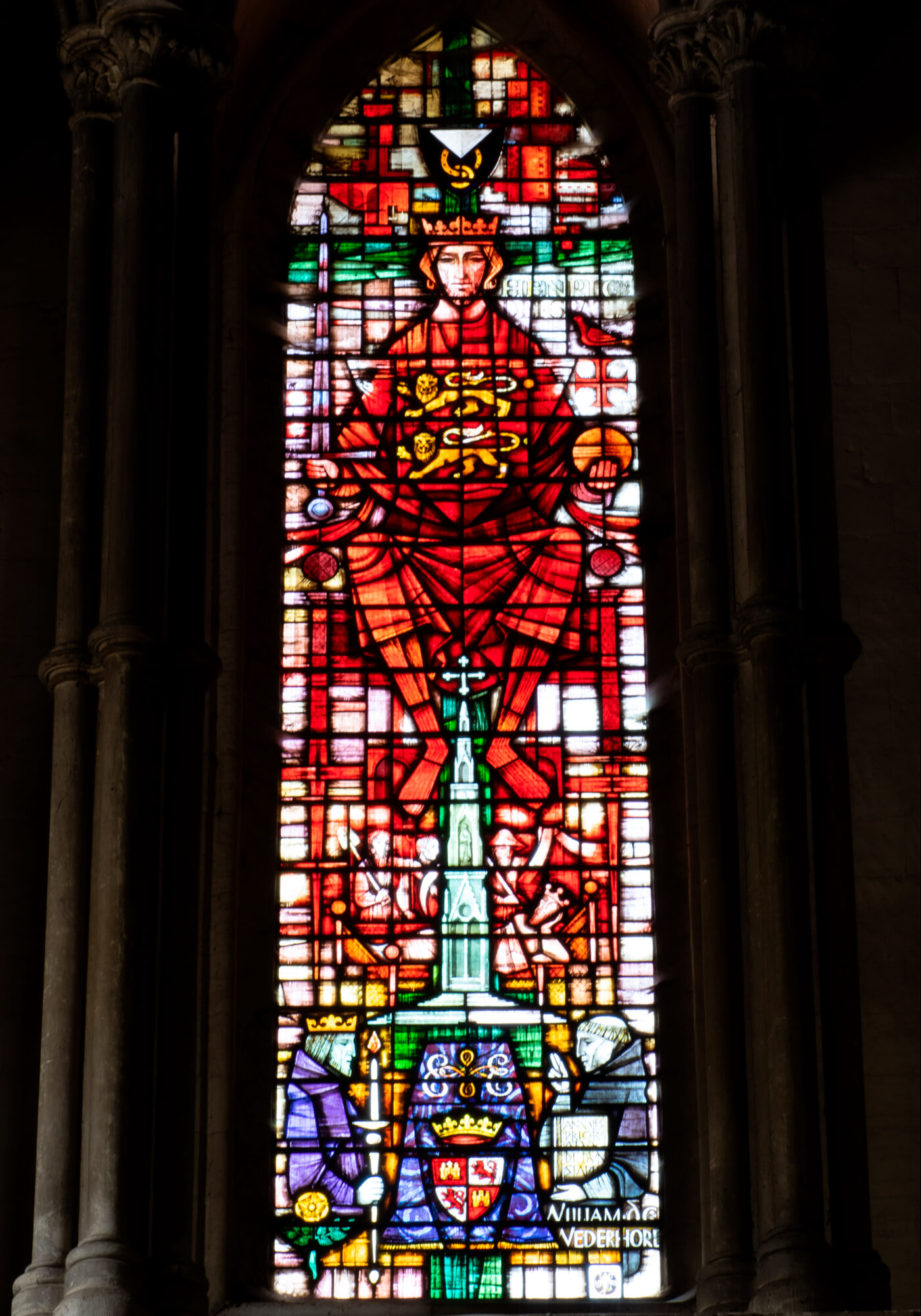
Post War growth and change
As a result of the post-World War II expansion of Dunstable, in 1959 St. Augustine’s Church was established to provide for the south of the town. Similarly, nine years later St. Fremund’s Church was built on the Beecroft Estate in north Dunstable. Ten years after that (1978) the Team Ministry was established to consolidate the three Anglican churches together.
To celebrate the 750th anniversary of the Priory’s dedication, the Dunstable Pageant was held in 1963. The event was sponsored by local industries and involved many people throughout the town.
In 1971 Bernard Miles, as the Man of the Chilterns, starred in The King’s Dream, a history of the Priory in words and music.
In 1997 a Local Ecumenical Partnership was established linking the Anglican Team Ministry with St. Katherine’s United Reformed Church in north-east Dunstable. The Team Ministry also has wider ecumenical links through the Dunstable Churches Together partnership.
Throughout the Church’s history changes in the liturgy have had a major impact: and none more so than those at the present time. Continuing from the trend of last century, today the Eucharist has become the main service, there is a much greater involvement of the laity and a more tolerant attitude towards young children being present at the services.
The alternative Service Book was introduced in the early 1980s and this was replaced by Common Worship in the 1990s. The Book Of Common Prayer was still used at the Said Eucharist on the first Sunday of the month.
In the 1990s a Pram Service was introduced. It is usually held on the first tuesday of the month and has seen a gradual increase in numbers over the years.
These changes are all designed to help the congregation continue the praise and prayer started in Dunstable by the Augustinian canons eight and a half centuries ago.
(Image – The Royal Window 1972)
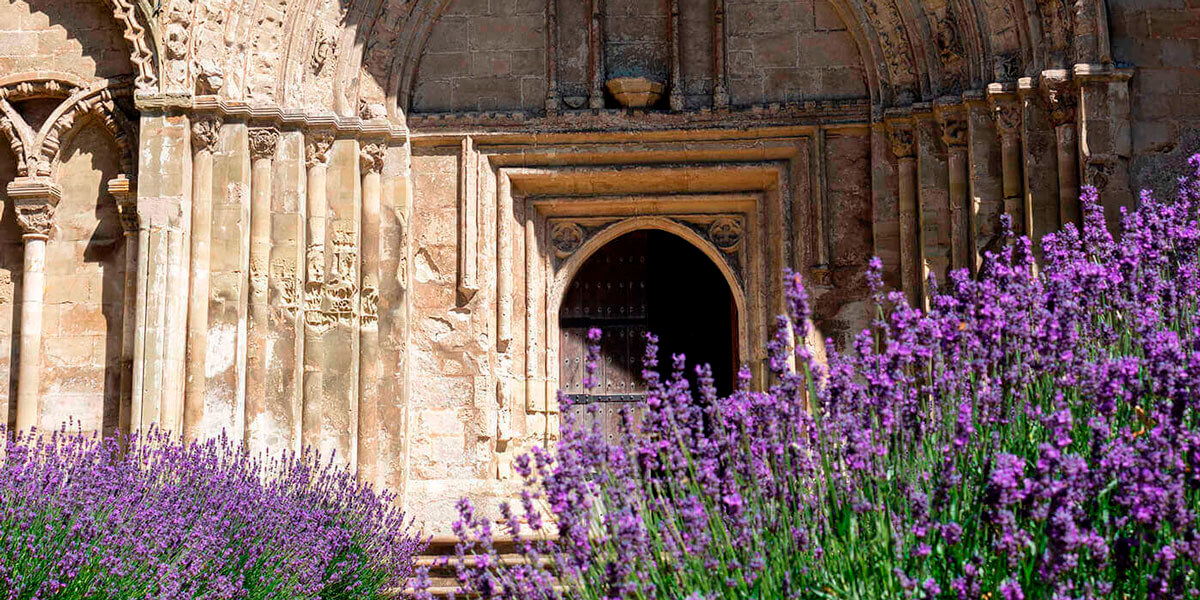
Into the Twenty First Century
To celebrate the new miillennium, the church joined with the rest of the town to look to its future and to celebrate its past. The Priory was involved in annual events such as History Week and Tudor Day. The church held its bazaars to coincide with events organised by the Town Council, which were held in Priory Meadows. At this time, the church began liaising with Priory House, which was opened as a Heritage Centre. The church was used by local schools as part of their Religious Education and History studies. Members of the congregation welcomed the children and their teachers, acting as guides and instructors. There was also an increase in the number of adult groups visiting the Priory and guided tours were tailored to their interests.
In 2010 a kitchen was installed in the north aisle of the church, encouraging fellowship after services and allowing the priory to be used for a greater variety of purposes. A new glass porch was built at the west doors.
As part of its Mission Action Plan, the Priory is starting Messy Church, as well as Time And Space and a Friends In Deed scheme.
Web Editor’s note
I must first express deep gratitude to Mr F A Fowler for his well researched and interestingly presented booklets on the Dunstable Priory. They have obviously been a major source of material for the Priory historical and architectural sections of this website. I am indebted to his son, David Fowler, for very kindly granting permission to use his father’s material.
All the drawings in the historical and architectural sections are by F A Fowler from his booklets, except for the ‘Plan of original Dunstable’ and ‘Great Hall of the Priory’ which are by Worthington G. Smith from his book: Dunstable Its History & Surroundings.


